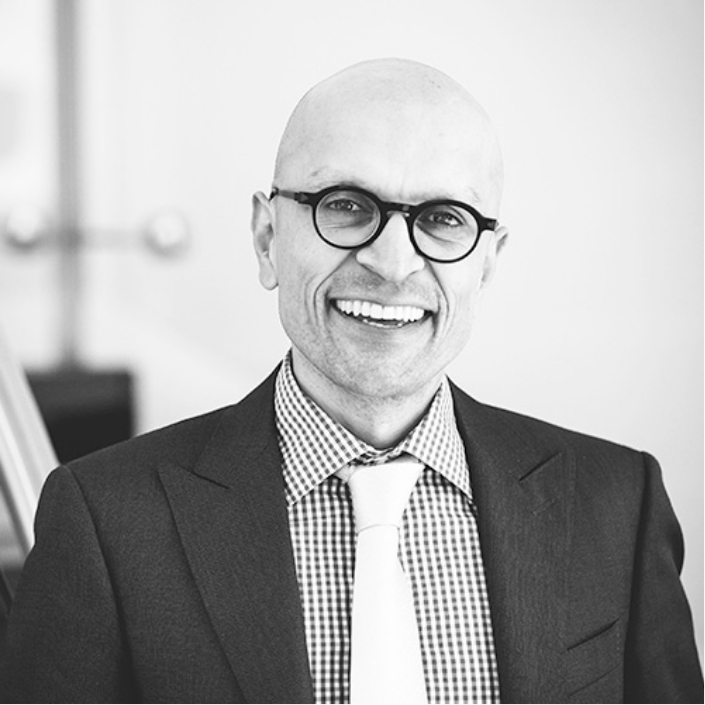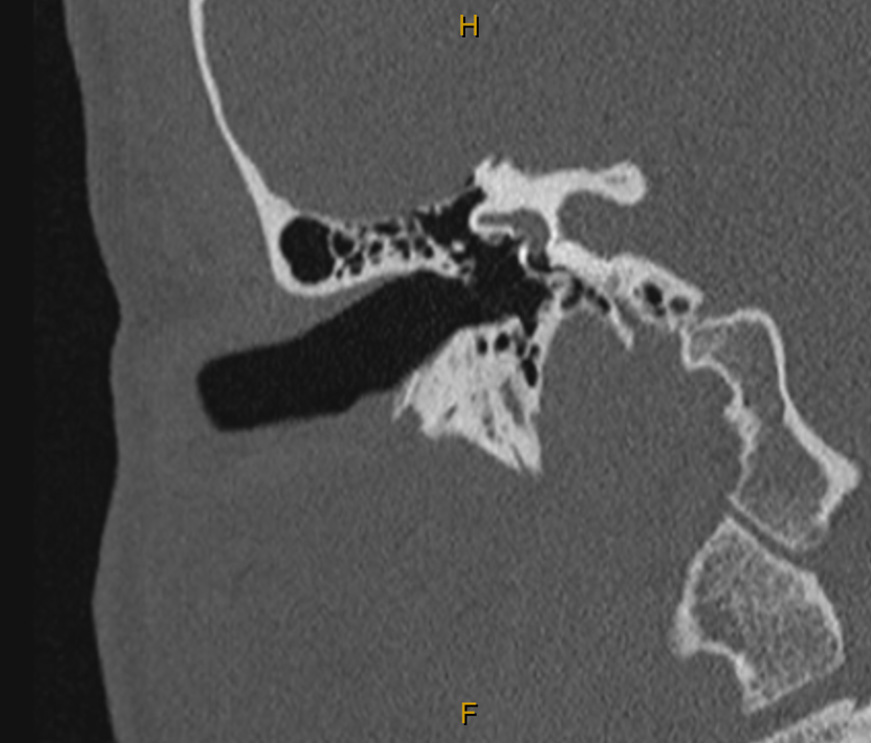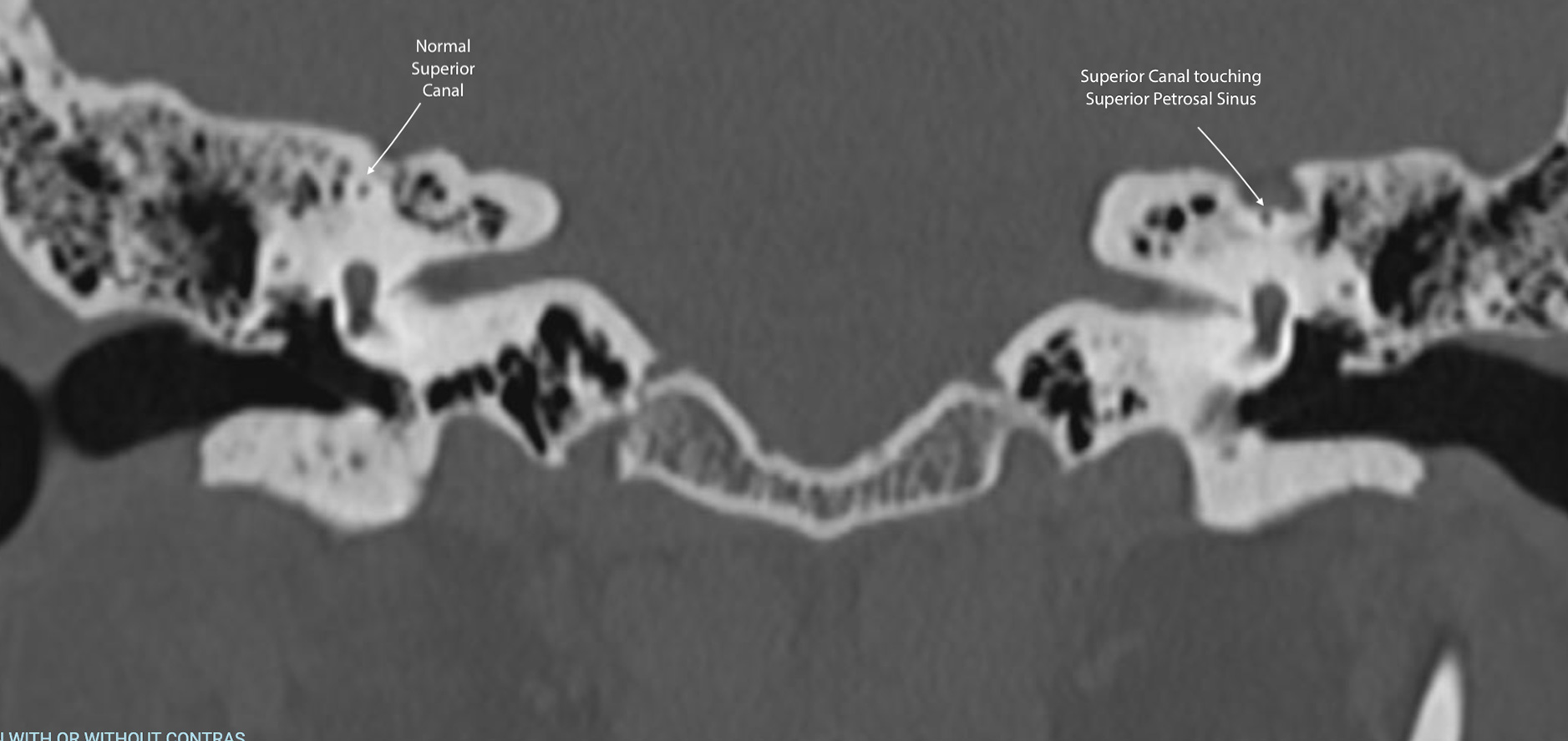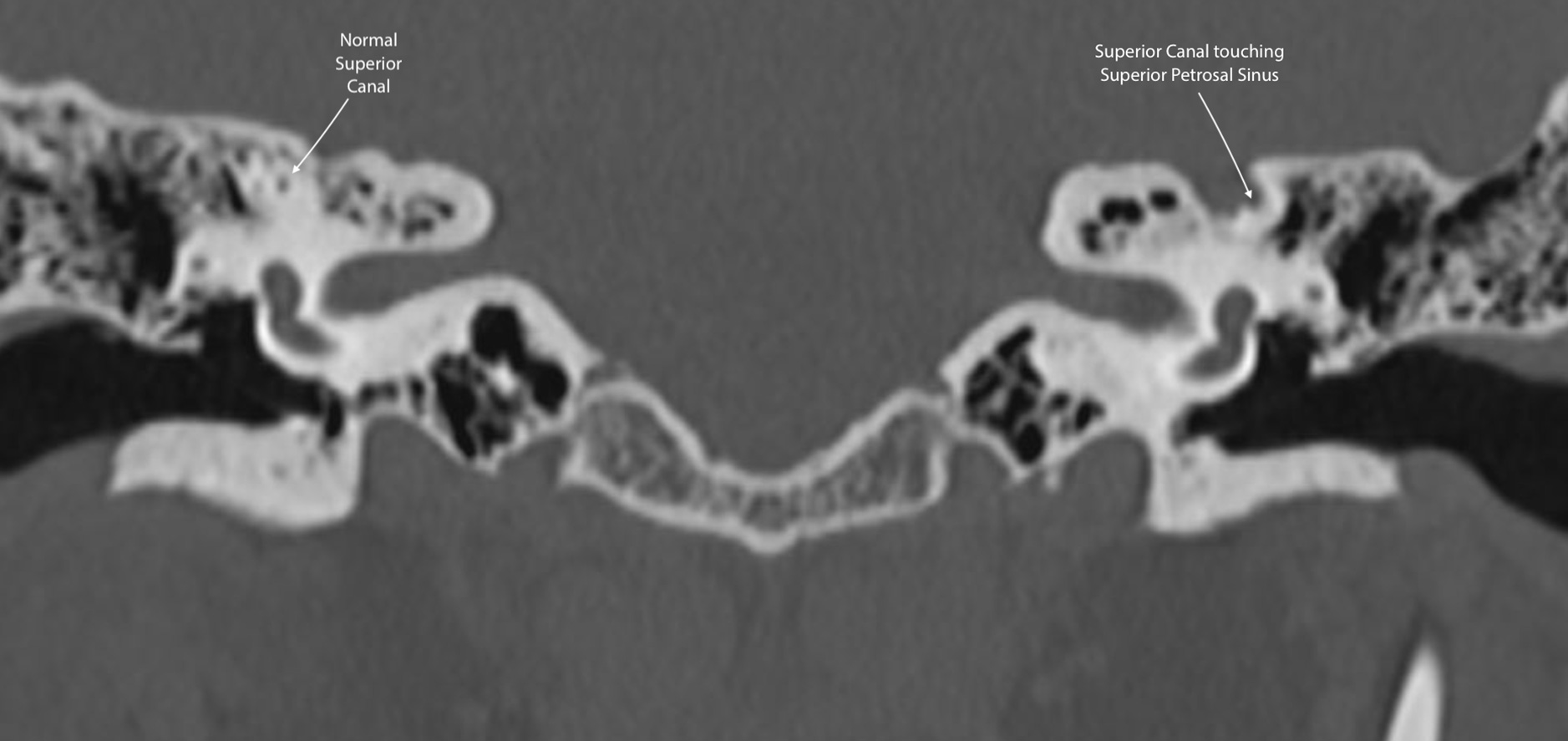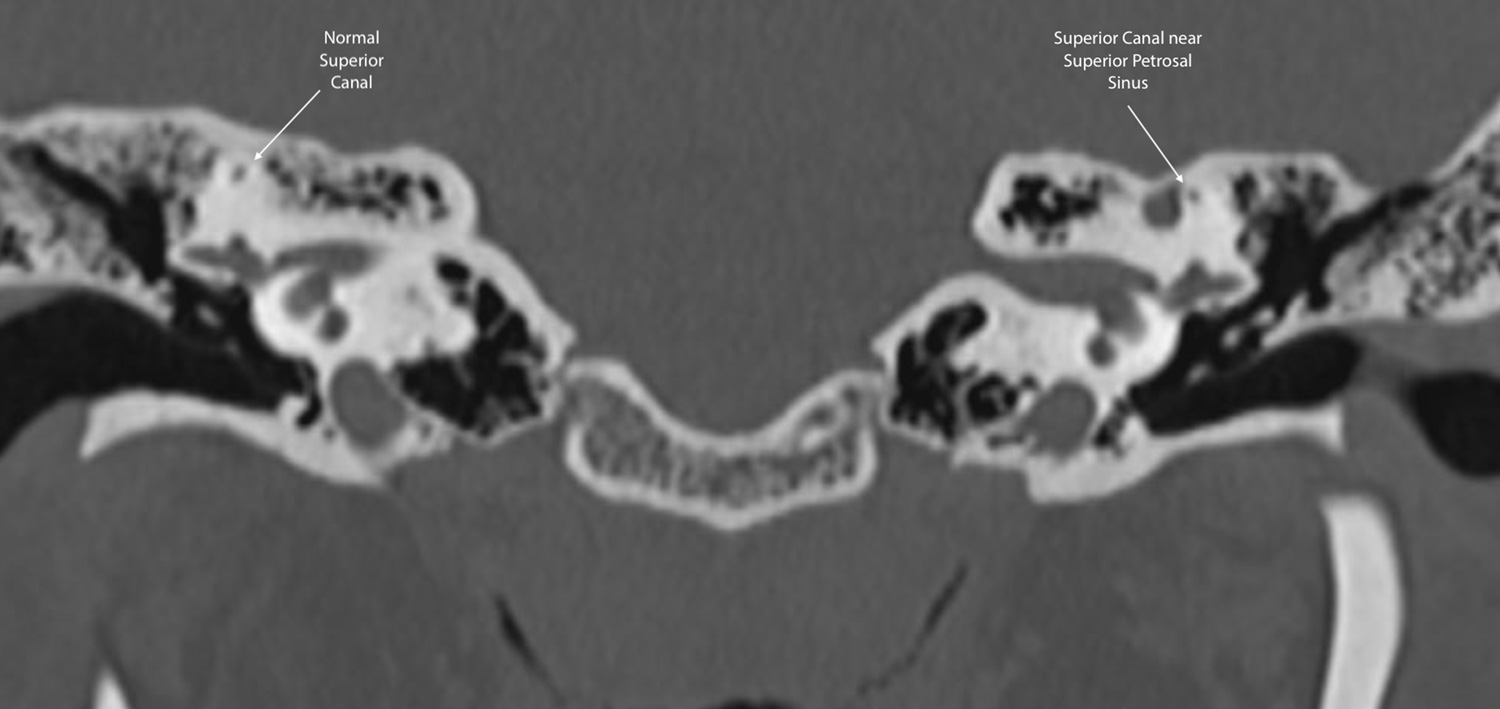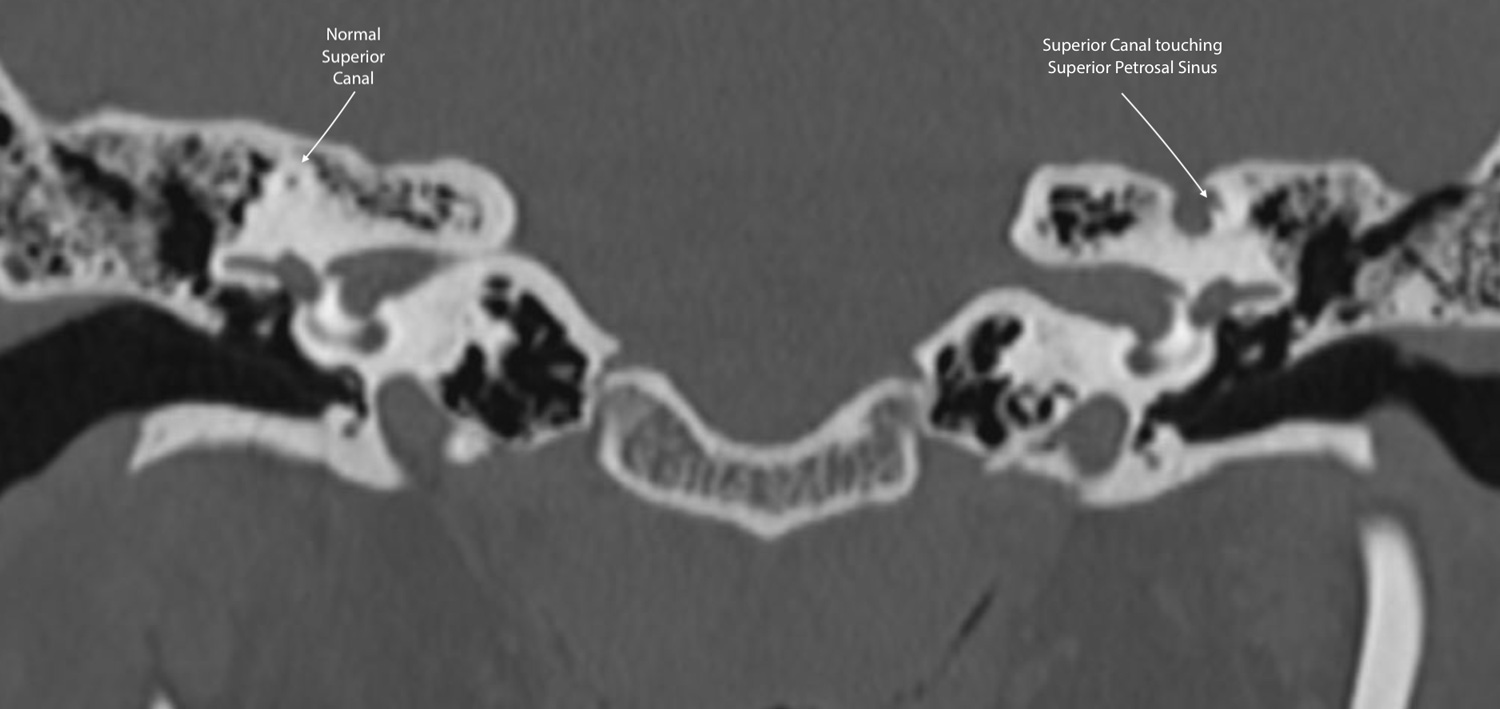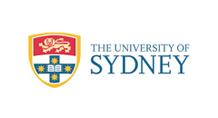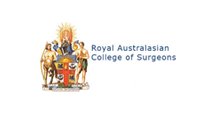Superior Canal Dehiscence
A loss of bone (dehiscence) between the upper balance (superior canal) organ and the brain lining.
Symptoms of Superior Canal Dehiscence
- Autophony - hearing your own voice amplified in the ear
- Ear fullness
- Pulsatile tinnitus (hearing a pulsation in the ear)
- Tullio phenomenon - pressure or sound induced vertigo or dizziness
Hearing Test (Audiology)
- Conductive Hearing loss
- Bone hearing Hyperacusis
- Normal acoustic reflexes
Balance Test (Vestibular Function Tests)
- Low VEMP with abnormally increased thresholds
CT Scan
- SCD to Brain (95% of cases) the canal rests on the dura or brain lining (Figures 1- 3).
- SCD to Superior Petrosal Sinus (5% of cases) where the canal rests against a vein around the brain lining (Figures 4 – 7).
Involves surgical repair either:
- Transcanal Round Window Plugging – a day surgery procedure performed through the ear canal, to partially close off, or reinforcing the round window (or natural exit passage of sound). This procedure has a 20-40% short term success rate in reducing symptoms and <1% chance of worsening the hearing. This method has a low chance of long term success.
- Transmastoid Plugging of the Superior Canal – a day surgery (or overnight stay) procedure under general anaesthetic. This surgery involves a cut behind the ear and drilling through the mastoid bone to reach the superior canal. The superior canal is then closed off with soft tissue. This procedure has a 70-80% success rate in reducing symptoms. There is a <10 % chance of worsening hearing.
- Middle Cranial Fossa Plugging of the Superior Canal – this procedure is a few days stay in hospital. The operation involves removing the skull bone above the ear and lifting the lining of the brain to reach the superior canal from above. An endoscope is used to identify the hole in the superior canal and the area is plugged with soft tissue or bone wax. The procedure has a 90% success rate is reducing the symptoms and <10% chance of hearing loss. Risk of brain injury, brain fluid leak and meningitis are <2%.
Superior Canal Dehiscence Video
Still have a question?
Our team will be happy to answer any questions you may have about Cholesteatoma’s.

